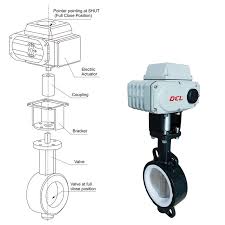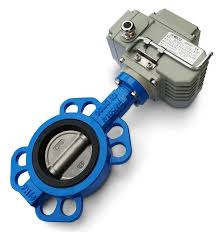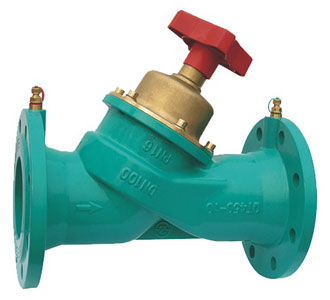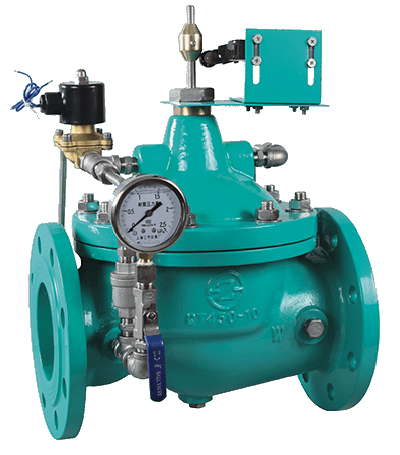Electric Butterfly Valve

The Application of Electric Butterfly Valve
The Electric Butterfly Valve, synonymous with efficiency and precision, finds widespread application across industries. Cameron, a trusted name in fluid control solutions, offers top-tier quality and reliability.
Featuring innovative technology like butterfly valve lockout and compatibility with various materials including carb butterfly valve, PVC butterfly valves, SMS butterfly valve, and Swissfluid butterfly valve, Cameron ensures seamless operations.
With Cameron brass ball valve standards and butterfly valve seat technology, coupled with materials like A350 LF2, this electric valve guarantees durability and longevity. Available in various sizes to accommodate specific requirements, Cameron’s butterfly valve size range ensures optimal performance in diverse applications.
Features of Electric Actuated Butterfly Valve
- In the case of no special request, ZECO electric butterfly valve is usually equipped with a German AUMA electric actuator, in order to use it for a long time in the pipeline, ZECO wouldn’t use the price to change the quality, our goal is to allow the user to select ZECO because ZECO product quality and reliable can use for a long time for the user in the long-term use of reducing the maintenance costs of the pipeline, rather than a low price;
- ZECO electric butterfly valve adopts hard sealed valve seat. The hard sealed valve seat surface can be surfacing welded to prevent the valve from being unable to be sealed due to damage to the valve seat and sealing surface by strong abrasive media;
- The stem of ZECO electric butterfly valve is designed in the anti blow out, preventing the stem blow out at the time of maintenance ;
- The material of ZECO electric butterfly valve is produced in accordance with international standards;
- Savings in labor;
- Plant safety;
- Product quality assurance;
- Automatic sequencing.
The Parameter of Electric Butterfly Valve
- Valve Type: Electrically actuated butterfly valve.
- Valve Size: Available in various sizes to suit different applications.
- Pressure Rating: Typically ANSI 150 or ANSI 300, ensuring compatibility with different pressure levels.
- Temperature Range: Standard operating temperature ranges from -20°C to 200°C (-4°F to 392°F), suitable for various industrial environments.
- Body Material: Constructed from robust materials such as stainless steel, carbon steel, or ductile iron.
- Disc Material: Made of corrosion-resistant materials like stainless steel or ductile iron for durability.
- Seat Material: Utilizes resilient materials like EPDM or PTFE for reliable sealing and longevity.
- Actuation Type: Electric actuator provides precise control over valve operation.
- End Connection: Available with various end connections such as flanged, wafer, or lug for easy installation.
- Leakage Rate: Engineered to meet industry standards for minimal leakage, ensuring efficient operation.
- Fire Safety: May feature fireproof seat design and metal-to-metal seals to withstand high temperatures.
- Compliance: Complies with industry standards such as API, ANSI, and ISO for quality assurance.
- Maintenance: Designed for easy maintenance with features like replaceable seats and seals, reducing downtime.
- Accessories: Compatible with various accessories like positioners, limit switches, and actuators for enhanced functionality.

The Operation Theory of Electric Butterfly Valve
The operation theory of an Electric Butterfly Valve involves precise control over fluid flow. Similar to Victaulic Butterfly Valve 705, it utilizes an electric actuator to regulate flow. Whether it’s a 1/2 inch butterfly valve or 2 1/2 butterfly valve, the principle remains consistent: the disc pivots to open or close the flow path, enabling efficient flow management.
The Parameters Table of Electric Butterfly Valve
| Parameter | Description |
|---|---|
| Valve Type | Electrically actuated butterfly valve |
| Valve Size | Various sizes available |
| Pressure Rating | ANSI 150, ANSI 300, etc. |
| Temperature Range | -20°C to 200°C (-4°F to 392°F) |
| Body Material | Stainless steel, carbon steel, ductile iron |
| Disc Material | Stainless steel, ductile iron, aluminum |
| Seat Material | EPDM, PTFE, metal-to-metal |
| Actuation Type | Electric actuator |
| End Connection | Flanged, wafer, lug |
| Leakage Rate | Meets or exceeds industry standards |
| Fire Safety | Fireproof seat design, metal-to-metal seals |
| Compliance | API, ANSI, ISO |
| Maintenance | Replaceable seats and seals for easy upkeep |
| Accessories | Compatible with various actuators, limit switches |
Relevant Information about Electric Butterfly Valve
- Rotor: The rotor is the part of the valve that rotates to control the flow of fluid. In an Electric Butterfly Valve, it’s the disc that pivots.
- Stator: The stator is the stationary part of the valve, typically consisting of the valve body and seat. It provides support and creates a sealing surface for the rotor.
- Universal Joint: The universal joint connects the electric actuator to the valve shaft, allowing for rotational movement. It ensures that the motion from the actuator is accurately transmitted to the valve.
- Shaft Seal: The shaft seal prevents leakage along the valve shaft where it passes through the valve body. It’s crucial for maintaining the integrity of the valve and preventing fluid loss.
- Driving System: The driving system includes the electric actuator and associated mechanisms that provide the force to operate the valve. It ensures smooth and precise control of the valve’s movement.
Material of Butterfly Valve with Electric Actuator
| No | Part | Material |
| 1 | Body | ASTM A216 WCB + 13Cr |
| 2 | Seal Ring | Graphite + SS304 |
| 3 | Retainer Flange | ASTM A105 |
| 4 | Pin | ASTM A276 410 |
| 5 | Disc | ASTM A216 WCB |
| 6 | Stem | ASTM A276 410 |
| 7 | Stem Packing | Graphite |
| 8 | Stem Beating | SS304 + PTFE |
| 9 | Bolt | ASTM A193 B7 |
| 10 | Nut | ASTM A194 2H |
| 11 | Yoke | ASTM A216 WCB |

